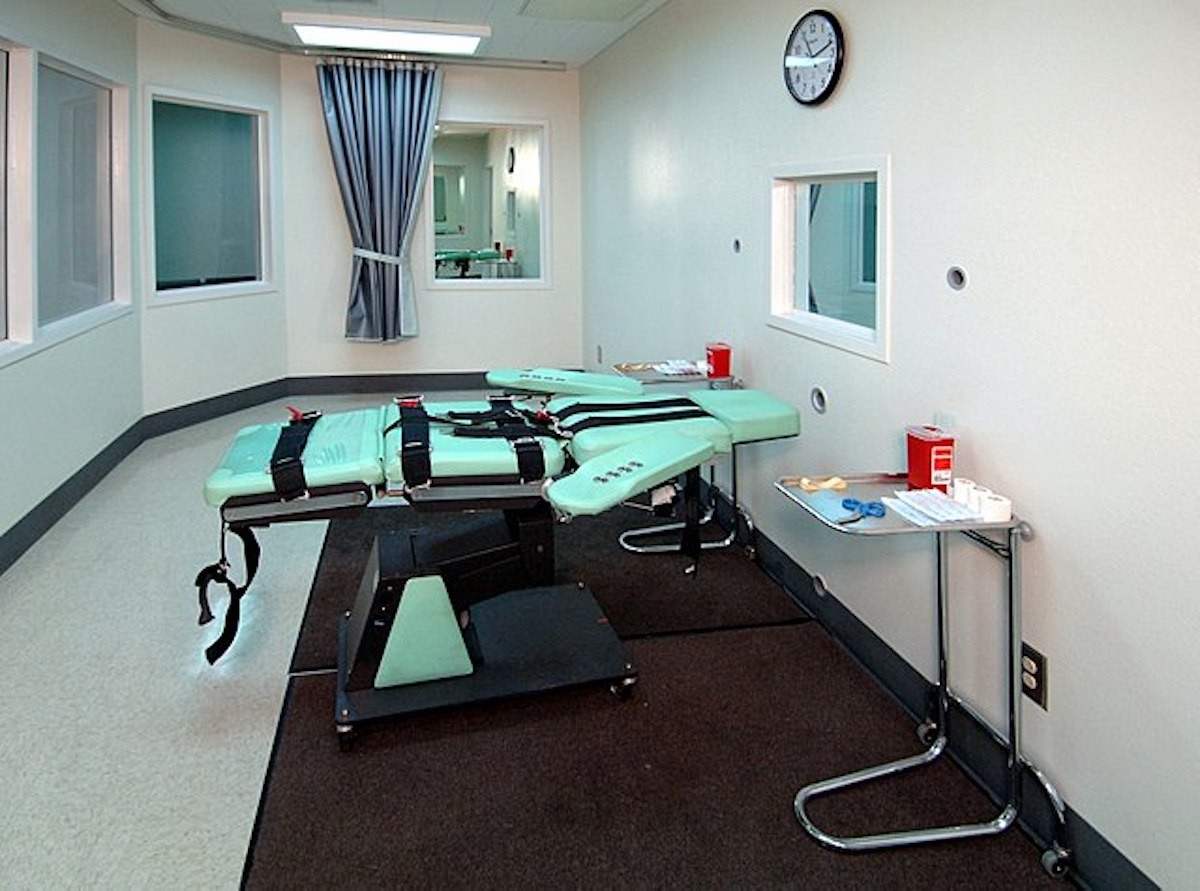Ohio Attorney General Dave Yost just couldn’t resist jumping onboard a new way to kill people – or the opportunity to be in front of television cameras.
Yost, Ohio’s two-term Republican attorney general, on Tuesday announced his support for legislation to allow nitrogen hypoxia to be used in Ohio executions. The bill is sponsored by state Reps. Brian Stewart, R-Ashville, and Phil Plummer, R-Dayton.
Yost said Ohio has “broke faith” with crime victims and jurors by not carrying out death sentences for the last five years while capital punishment remains law. Without mentioning Gov. Mike DeWine by name, Yost said not following the law is “an abdication of the sovereignty of the state of Ohio.”
The proposal, which has 13 cosponsors, would allow condemned inmates to choose between execution by lethal drugs or nitrogen hypoxia. However, nitrogen hypoxia would be used if lethal injections drugs are unavailable, which has been the case for the past five years.
Yost, who desperately wants to be Ohio’s next governor, is woefully misguided in pushing Ohio to follow suit with Alabama by adopting nitrogen hypoxia for capital punishment.
His push at this point is untimely, unseemly, and unnecessary. It is an exercise in personal and political vanity at a time when Ohioans are less interested in executions. Bipartisan legislation to end capital punishment is pending before the General Assembly.
Alabama executed Kenneth Eugene Smith on Jan. 27, using nitrogen gas for the first time in U.S. history. Officials called it a “textbook” execution but media eyewitnesses described a quite different scene as Smith shook violently and thrashed on the gurney after the gas began flowing. He gasped for breath for several minutes and appeared to be dry-heaving into the mask covering his face.
The execution of Dennis McGuire on Jan. 16, 2014, was one of the last executions I witnessed as a reporter for the Columbus Dispatch. Like the execution of Smith, McGuire’s death by lethal injection was a nightmare. He gasped, choked, struggled and writhed on the execution table for 12 minutes before, mercifully, it was over. It was by far the most gruesome of 21 executions I witnessed.
In the process used on Smith, nitrogen — and no oxygen — is pumped into an airtight mask worn by the condemned. The result is suffocation. It is so dangerous that a spiritual adviser in the execution chamber had to sign a waiver of liability in case the gas leaked.
Ohio hasn’t had an execution since 2018. Gov. DeWine, also a Republican, has repeatedly delayed scheduled executions, citing the lack of availability of lethal injection drugs. It is certain there will be no executions here until the end of his term in 2026.
So why is Yost weighing in at this point?
He tipped his hand last year when he used the Capital Crimes Report issued annually by the attorney general as a bully pulpit to express his desire to resume executions which he said have been stalled far too long. He waved the report at Tuesday’s press conference.
Now he’s in a head-to-head battle with Lt. Gov. Jon Husted as prime competitors for governor in two years. Husted has been rolling out press releases on a variety of topics. The common wisdom about the attorney general is the most dangerous place to be is between Yost and a television camera.
I have known Dave Yost, who for a while went by Davyd Yost, for more than 30 years. We were competitors at Columbus City Hall when I worked for the Columbus Dispatch and he reported for the Columbus Citizen-Journal, now defunct.
He was a good journalist, a fair to middling musician and a fun guy to be around.
But then he got a law license, became a prosecutor, got MAGA-tized and took a hard turn to the right.
He professes to be a Christian and opposes abortion.
This is where I cannot understand his thinking. If all life is sacred, as abortion opponents contend – and I agree – how can you favor taking the life of someone through execution? Either all life is sacred or it is not. There is no gray area.
Both Yost and Stewart danced around the sanctity of life question at the Statehouse press conference, seeking to contrast an “innocent life and a guilty life.”
Life is life. Imago dei. The image of Christ.
It would be wise (albeit unlikely) for Yost to heed the words of former U.S. Supreme Court Justice Harry Blackman, a Republican appointed by Richard Nixon.
In a famous dissent in a 1994 murder case before the Supreme Court, Blackman wrote:
“From this day forward, I no longer shall tinker with the machinery of death. I feel…obligated simply to concede that the death penalty experiment has failed. It is virtually self-evident to me now that no combination of procedural rules or substantive regulations ever can save the death penalty from its inherent constitutional deficiencies.”
It’s time to end, not extend the use of capital punishment in Ohio.
This guest commentary was originally published by the Ohio Capital Journal and republished here with permission.Follow us: Apple News | Google News | NewsBreak | Reddit | Instagram | Facebook | Twitter | Or sign up for our RSS Feed









